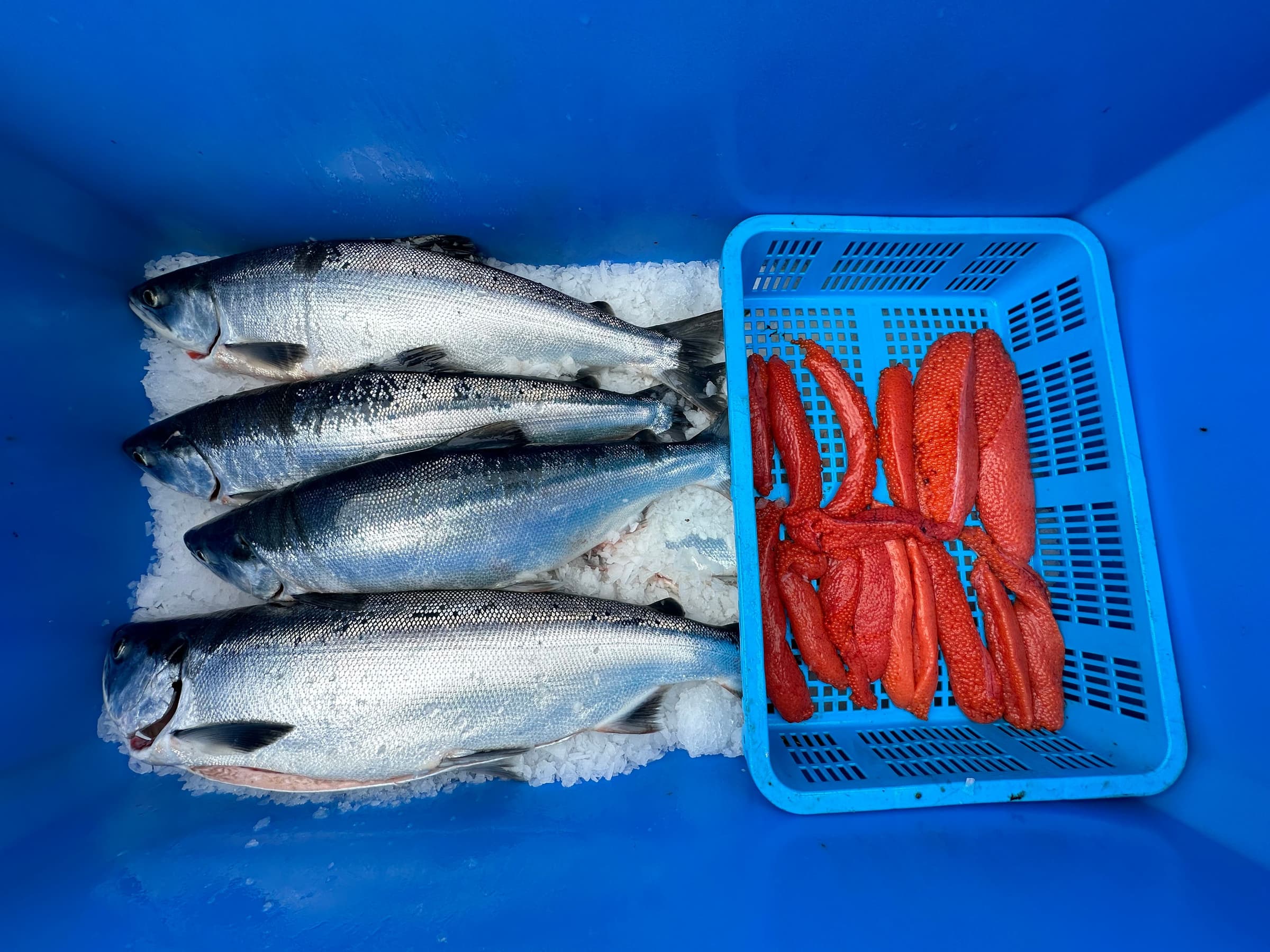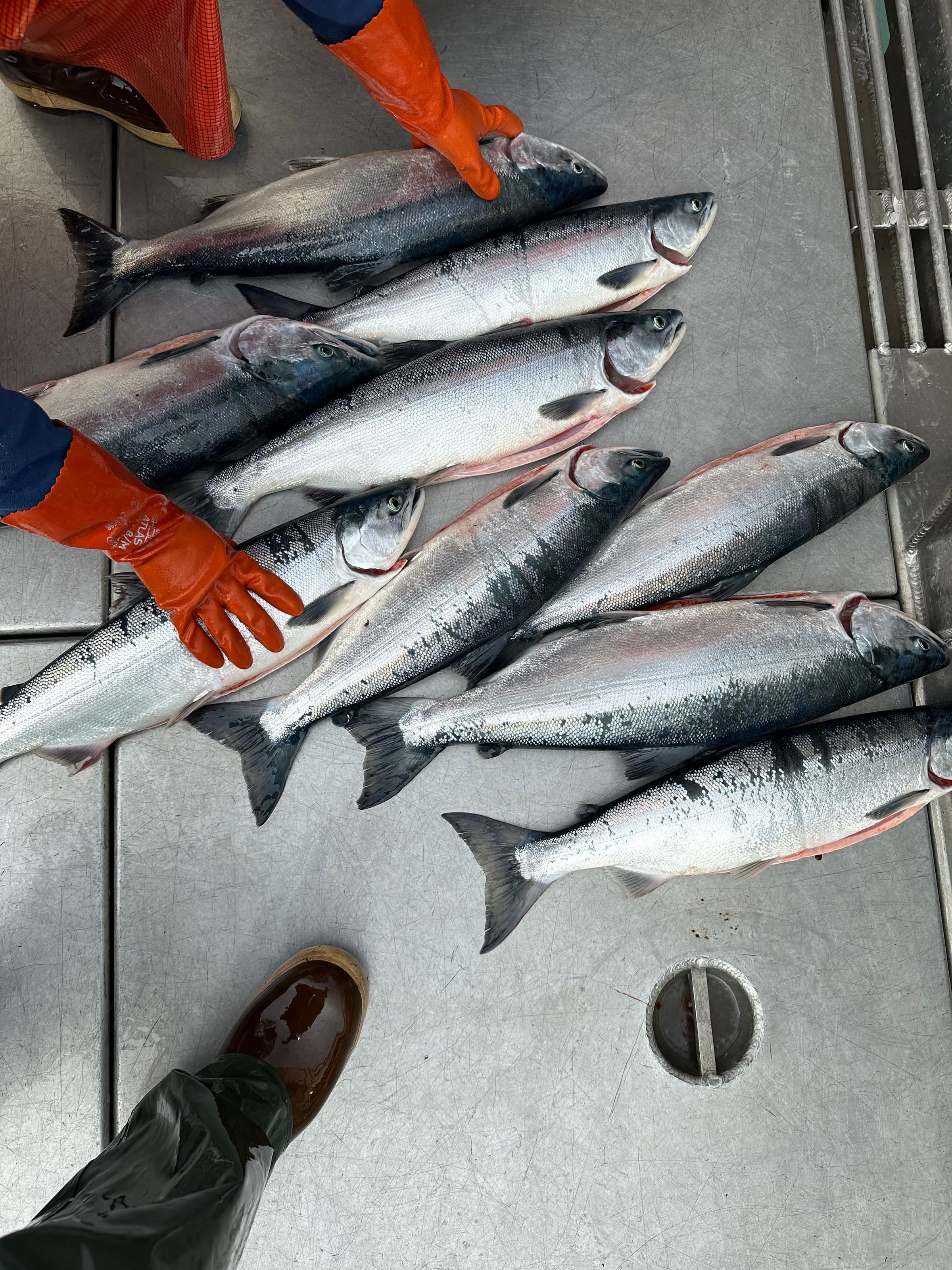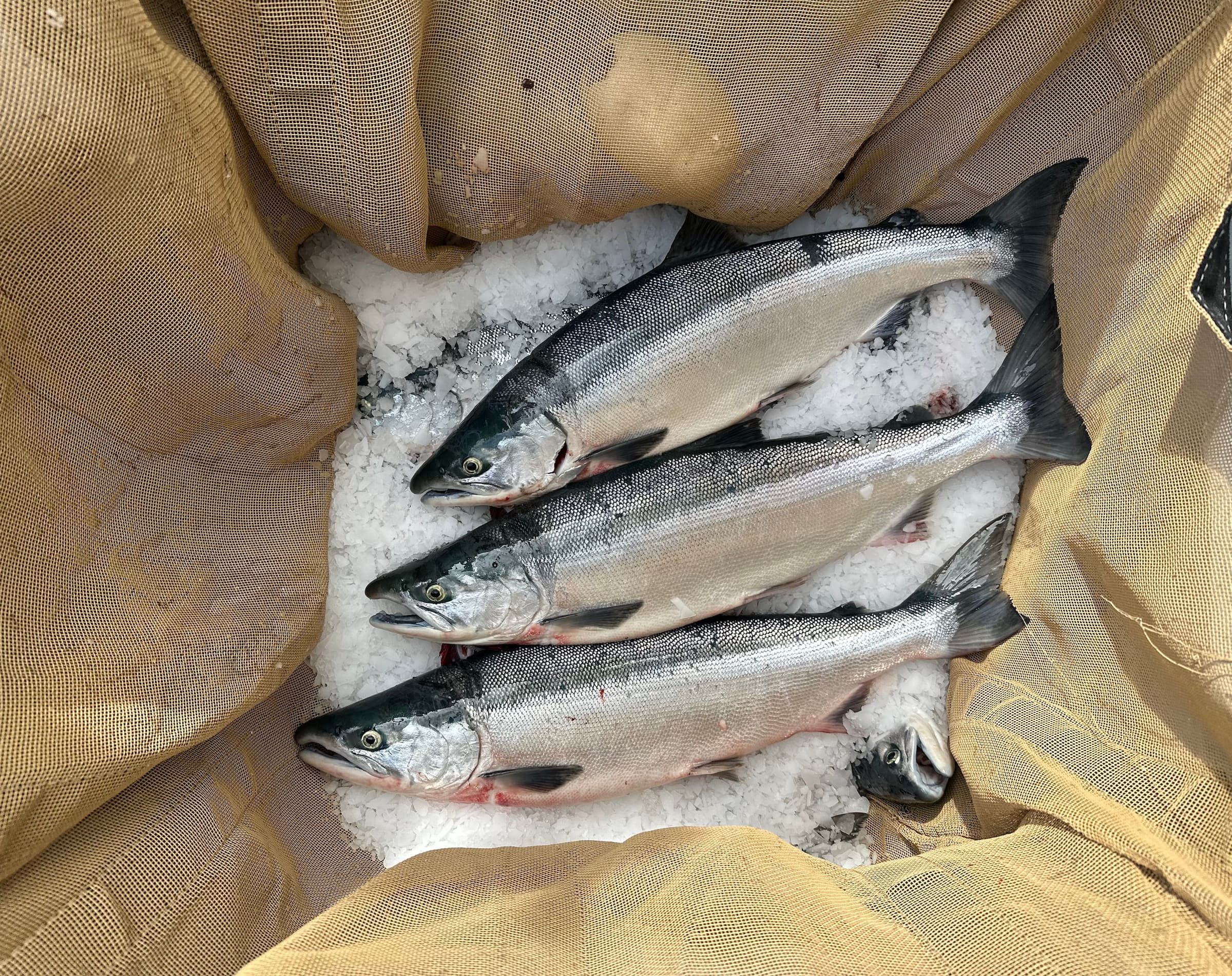Large, Fatty, and Incredibly Delicious
Copper River salmon are celebrated as some of the world's best. They are shipped fresh to markets in early summer, where they command prices of over $60 per pound. What makes these wild salmon so special? Let’s explore!
Genetically, Copper River salmon aren’t fundamentally different from other wild salmon, but they’ve evolved to be uniquely suited to their watershed. The Copper River stretches nearly 300 miles, coursing over rugged mountains and high elevations. To travel upstream through these formidable waters, the salmon have developed into powerful swimmers. Their stout bodies require ample fat reserves to sustain them on their long journey — hundreds of miles — without feeding. The longer their upstream migration, the brighter their skin and flesh tend to be upon reaching the river’s mouth. This is why Copper River salmon are ocean-bright when caught — they’re still full of fat and vitality after their long journey.
Large, fatty, wild Copper River salmon caught ocean-bright are incredibly delicious. But what else makes them so special? Aren’t there other wild salmon with similar taste?

In comparison to Copper River salmon, other salmon with a shorter migration — those that swim only a mile or two to spawn — have developed different adaptations. Their skin becomes tougher and slimier as they swim, helping them navigate challenging waters. However, these changes make them less desirable for eating — they burn through their fat stores and their flesh turns pale the closer they get to spawning.
This brings us to the second pillar of Copper River salmon’s fame — marketing and quality. In the early 1980s, most of these fish were sold through the same channels as the roughly 40 million other sockeye and king salmon caught in Alaska each year. Then, a Seattle-based restaurant consultant named Jon Rowley had a brilliant idea. He sampled some Copper River salmon that a local smoker had in his freezer and was struck by its quality. The more he researched, the more he appreciated its potential. The name “Copper River Salmon” was perfect, and the river’s proximity to the airport in Cordova meant fresh, high-quality fish could be flown out quickly. These beautiful fish are the first of the season, starting in late May, so they hit the marketplace first. Jon persuaded local fishermen in Cordova to handle their catch with extra care since he was shipping it directly to markets and restaurants — and paying a premium for quality.
Over the intervening four decades, Copper River salmon’s reputation has only grown. Seafood counters and fine dining establishments across the country feature the season’s first fresh wild salmon at a premium — more than any other salmon variety.
There’s another advantage to this fishery’s management approach — sustainability. The Copper River fishery is carefully managed to ensure healthy spawning runs, including 12-hour fishing windows with days off in between. This allows enough fish to spawn upstream for future seasons. For fishermen who sell their catch directly to restaurants or consumers, this management model also minimizes missed fishing opportunities. Since the fleet catches their salmon and then ships it during their days off, they can deliver fresh fish promptly. For example, a sockeye caught on a Monday can be at a West Coast restaurant by Tuesday evening — fresher than ever.

Due to the high demand for these prized fish, supplying enough frozen Copper River sockeye for our subscriptions has been challenging. In years when runs are smaller, it’s difficult to find frozen stock amid many competing buyers. However, we will have some Copper River sockeye available for our dedicated fans. Keep an eye out in the marketplace and add-on program in August, and you can decide if it lives up to the hype. You can also track the progress of the returning sockeye salmon here.


